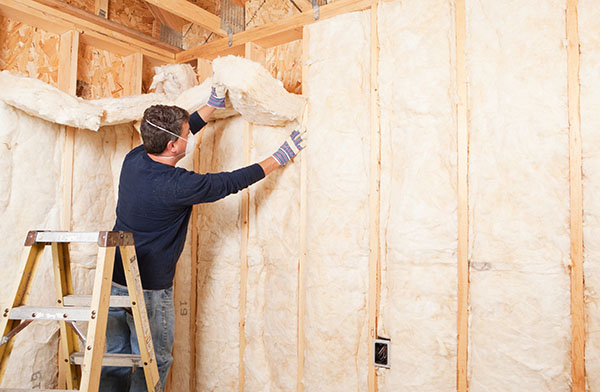Vapor Barrier Fiberglass Insulation Batts
Depending on the space to be insulated, you can select paper-faced, foil-faced or loose batts. When you want to retard the movement of moisture from one place to another, you need some form of impervious barrier. Both paper (called kraft paper) and foil faces offer vapor barrier properties. Paper and foil-faced insulation, plus gypsum board and certain latex paints, work well together as a team to stop moisture migration.
But what if you also want to prevent heat loss or gain? That’s when foil-faced batts really shine.
Radiant Barrier Batt Insulation
Warmed air tends to move towards cooler areas and surfaces. Thermal changes occur by conduction (movement through an object such as a framing stud), convection (warm air rising) and radiation (rays of heat moving across a space).
While plain insulation interferes with conductive and convective heat transfer, to prevent radiative movement, you need to reflect the heat back towards its source. Foil fills the bill perfectly. Even a very thin sheet of aluminum or Mylar type foil bounces radiative heat back into the home or back outside depending on where you place it.
Use Foil-Faced Batt Insulation in Attic and Walls
In Colorado, we tend to spend more days heating our homes than cooling them. Foil-faced batt insulation helps keep interior heat inside the living area when placed in the attic with the foil side down. This also helps prevent moisture migration to the attic through the batts.
On icy days, rising heat and humidity works its way through the gypsum ceiling boards and eventually through whatever insulation lies above the ceiling (except maybe expensive expanding polyurethane foam). If the level of humidity overwhelms the attic ventilation system, it can condense on the underside of the roof deck forming ice crystals. When the ice melts, it tends to wreak a little havoc.
The same moisture and radiant barrier principles also work in wall insulation. You can insulate outside walls and framed-finished basements with foil-faced batts to keep the inside of your home cozy in the winter. Although your foil placement may be aimed at keeping the cold out and warmth in, it also contributes to lower cooling bills in the summer, especially in conjunction with an adequate attic ventilation system.
DMS offers batt and mineral wool insulation as part of our commitment to our one-stop supply of gypsum drywall products, accessories and equipment. Please feel free to consult with our experienced staff for help choosing the right insulation for your building project.

